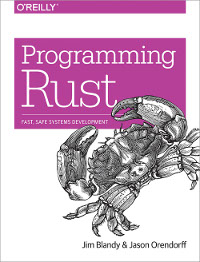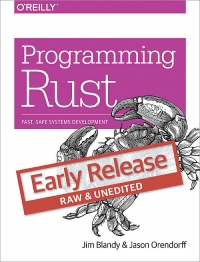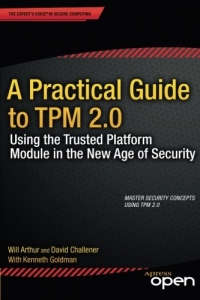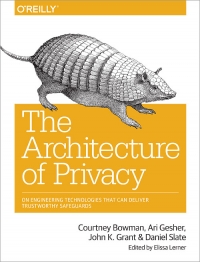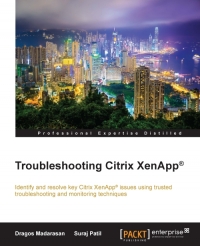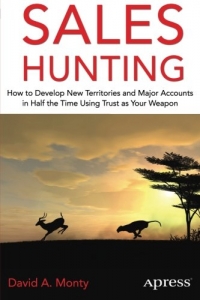Rust eBooks
Programming Rust
Rust is a new systems programming language that combines the performance and low-level control of C and C++ with memory safety and thread safety. Rust's modern, flexible types ensure your program is free of null pointer dereferences, double frees, dangling pointers, and similar bugs, all at compile time, without runtime overhead. In multi-threaded code, Rust catches data races at compile time, making concurrency much easier to use. Written by two experienced systems programmers, this book explains how Rust manages to bridge the gap between performance and safety, and how you can take advantage of it. Topics include:How Rust represents values in memory (with diagrams);Complete explanations of ownership, moves, borrows, and lifetimes;Cargo, rustdoc, unit tests, and how to publish your code on crates.io, Rust's public package repository;High-level features like generic code, closures, collections, and iterators that make ...
Rust is a new systems programming language that combines the performance and low-level control of C and C++ with memory safety and thread safety. Rust's modern, flexible types ensure your program is free of null pointer dereferences, double frees, dangling pointers, and similar bugs, all at compile time, without runtime overhead. In multi-threaded code, Rust catches data races at compile time, making concurrency much easier to use. Written by two experienced systems programmers, this book explains how Rust manages to bridge the gap between performance and safety, and how you can take advantage of it. Topics include:How Rust represents values in memory (with diagrams);Complete explanations of ownership, moves, borrows, and lifetimes;Cargo, rustdoc, unit tests, and how to publish your code on crates.io, Rust's public package repository;High-level features like generic code, closures, collections, and iterators that make ...
Programming Rust
This practical book introduces systems programmers to Rust the new and cutting-edge language. You'll learn how Rust offers the rare and valuable combination of statically verified memory safety and low-level control—imagine C++, but without dangling pointers, null pointer dereferences, leaks, or buffer overruns. Author Jim Blandy - a former maintainer of GNU Emacs and GNU Guile - demonstrates how Rust has the potential to be the first usable programming language that brings the benefits of an expressive modern type system to systems programming. Rust's rules for borrowing, mutability, ownership, and moves versus copies will be unfamiliar to most systems programmers, but they're key to Rust's unique advantages. This book presents Rust's rules clearly and economically; elaborates on their consequences; and shows you how to express the programs you want to write in terms that Rust can prove are free of broad classes of everyday errors. ...
This practical book introduces systems programmers to Rust the new and cutting-edge language. You'll learn how Rust offers the rare and valuable combination of statically verified memory safety and low-level control—imagine C++, but without dangling pointers, null pointer dereferences, leaks, or buffer overruns. Author Jim Blandy - a former maintainer of GNU Emacs and GNU Guile - demonstrates how Rust has the potential to be the first usable programming language that brings the benefits of an expressive modern type system to systems programming. Rust's rules for borrowing, mutability, ownership, and moves versus copies will be unfamiliar to most systems programmers, but they're key to Rust's unique advantages. This book presents Rust's rules clearly and economically; elaborates on their consequences; and shows you how to express the programs you want to write in terms that Rust can prove are free of broad classes of everyday errors. ...
A Practical Guide to TPM 2.0
A Practical Guide to TPM 2.0: Using the Trusted Platform Module in the New Age of Security is a straight-forward primer for developers. It shows security and TPM concepts, demonstrating their use in real applications that the reader can try out. Simply put, this book is designed to empower and excite the programming community to go out and do cool things with the TPM. The approach is to ramp the reader up quickly and keep their interest.A Practical Guide to TPM 2.0: Using the Trusted Platform Module in the New Age of Security explains security concepts, describes the TPM 2.0 architecture, and provides code and pseudo-code examples in parallel, from very simple concepts and code to highly complex concepts and pseudo-code. The book includes instructions for the available execution environments and real code examples to get readers up and talking to the TPM quickly. The authors then help the users expand on that with pseudo-code descriptions of useful applications using the TPM. ...
A Practical Guide to TPM 2.0: Using the Trusted Platform Module in the New Age of Security is a straight-forward primer for developers. It shows security and TPM concepts, demonstrating their use in real applications that the reader can try out. Simply put, this book is designed to empower and excite the programming community to go out and do cool things with the TPM. The approach is to ramp the reader up quickly and keep their interest.A Practical Guide to TPM 2.0: Using the Trusted Platform Module in the New Age of Security explains security concepts, describes the TPM 2.0 architecture, and provides code and pseudo-code examples in parallel, from very simple concepts and code to highly complex concepts and pseudo-code. The book includes instructions for the available execution environments and real code examples to get readers up and talking to the TPM quickly. The authors then help the users expand on that with pseudo-code descriptions of useful applications using the TPM. ...
The Architecture of Privacy
Technology's influence on privacy not only concerns consumers, political leaders, and advocacy groups, but also the software architects who design new products. In this practical guide, experts in data analytics, software engineering, security, and privacy policy describe how software teams can make privacy-protective features a core part of product functionality, rather than add them late in the development process. Ideal for software engineers new to privacy, this book helps you examine privacy-protective information management architectures and their foundational components—building blocks that you can combine in many ways. Policymakers, academics, students, and advocates unfamiliar with the technical terrain will learn how these tools can help drive policies to maximize privacy protection. ...
Technology's influence on privacy not only concerns consumers, political leaders, and advocacy groups, but also the software architects who design new products. In this practical guide, experts in data analytics, software engineering, security, and privacy policy describe how software teams can make privacy-protective features a core part of product functionality, rather than add them late in the development process. Ideal for software engineers new to privacy, this book helps you examine privacy-protective information management architectures and their foundational components—building blocks that you can combine in many ways. Policymakers, academics, students, and advocates unfamiliar with the technical terrain will learn how these tools can help drive policies to maximize privacy protection. ...
Troubleshooting Citrix XenApp
Citrix XenApp is an application virtualization product from Citrix. It allows users to connect to their corporate applications from various computer systems and even mobile devices. XenApp has grown into a complex software with ever-expanding infrastructures in place. Together with tight integrations with other systems such as Terminal Services, Active Directory, and other third-party authentication services, troubleshooting XenApp has become more complicated. This book teaches you how to approach troubleshooting complex issues with XenApp deployments and understand the problem, find a fix or workaround, determine the root cause, and apply corrective steps wherever applicable. The book progresses to give you an idea about the many supportive components that play an important role in XenApp's application delivery model and should be considered while troubleshooting XenApp issues. It also shows you standard troubleshooting processes so that you can resolve complex XenApp issues in a m ...
Citrix XenApp is an application virtualization product from Citrix. It allows users to connect to their corporate applications from various computer systems and even mobile devices. XenApp has grown into a complex software with ever-expanding infrastructures in place. Together with tight integrations with other systems such as Terminal Services, Active Directory, and other third-party authentication services, troubleshooting XenApp has become more complicated. This book teaches you how to approach troubleshooting complex issues with XenApp deployments and understand the problem, find a fix or workaround, determine the root cause, and apply corrective steps wherever applicable. The book progresses to give you an idea about the many supportive components that play an important role in XenApp's application delivery model and should be considered while troubleshooting XenApp issues. It also shows you standard troubleshooting processes so that you can resolve complex XenApp issues in a m ...
A Practical Guide to TPM 2.0
A Practical Guide to TPM 2.0: Using the Trusted Platform Module in the New Age of Security is a straight-forward primer for developers. It shows security and TPM concepts, demonstrating their use in real applications that the reader can try out. Simply put, this book is designed to empower and excite the programming community to go out and do cool things with the TPM. The approach is to ramp the reader up quickly and keep their interest.A Practical Guide to TPM 2.0: Using the Trusted Platform Module in the New Age of Security explains security concepts, describes the TPM 2.0 architecture, and provides code and pseudo-code examples in parallel, from very simple concepts and code to highly complex concepts and pseudo-code. The book includes instructions for the available execution environments and real code examples to get readers up and talking to the TPM quickly. The authors then help the users expand on that with pseudo-code descriptions of useful applications using the TPM. ...
A Practical Guide to TPM 2.0: Using the Trusted Platform Module in the New Age of Security is a straight-forward primer for developers. It shows security and TPM concepts, demonstrating their use in real applications that the reader can try out. Simply put, this book is designed to empower and excite the programming community to go out and do cool things with the TPM. The approach is to ramp the reader up quickly and keep their interest.A Practical Guide to TPM 2.0: Using the Trusted Platform Module in the New Age of Security explains security concepts, describes the TPM 2.0 architecture, and provides code and pseudo-code examples in parallel, from very simple concepts and code to highly complex concepts and pseudo-code. The book includes instructions for the available execution environments and real code examples to get readers up and talking to the TPM quickly. The authors then help the users expand on that with pseudo-code descriptions of useful applications using the TPM. ...
The Architecture of Privacy
Technology's influence on privacy not only concerns consumers, political leaders, and advocacy groups, but also the software architects who design new products. In this practical guide, experts in data analytics, software engineering, security, and privacy policy describe how software teams can make privacy-protective features a core part of product functionality, rather than add them late in the development process. Ideal for software engineers new to privacy, this book helps you examine privacy-protective information management architectures and their foundational components—building blocks that you can combine in many ways. Policymakers, academics, students, and advocates unfamiliar with the technical terrain will learn how these tools can help drive policies to maximize privacy protection. ...
Technology's influence on privacy not only concerns consumers, political leaders, and advocacy groups, but also the software architects who design new products. In this practical guide, experts in data analytics, software engineering, security, and privacy policy describe how software teams can make privacy-protective features a core part of product functionality, rather than add them late in the development process. Ideal for software engineers new to privacy, this book helps you examine privacy-protective information management architectures and their foundational components—building blocks that you can combine in many ways. Policymakers, academics, students, and advocates unfamiliar with the technical terrain will learn how these tools can help drive policies to maximize privacy protection. ...
Troubleshooting Citrix XenApp
Citrix XenApp is an application virtualization product from Citrix. It allows users to connect to their corporate applications from various computer systems and even mobile devices. XenApp has grown into a complex software with ever-expanding infrastructures in place. Together with tight integrations with other systems such as Terminal Services, Active Directory, and other third-party authentication services, troubleshooting XenApp has become more complicated. This book teaches you how to approach troubleshooting complex issues with XenApp deployments and understand the problem, find a fix or workaround, determine the root cause, and apply corrective steps wherever applicable. The book progresses to give you an idea about the many supportive components that play an important role in XenApp's application delivery model and should be considered while troubleshooting XenApp issues. It also shows you standard troubleshooting processes so that you can resolve complex XenApp issues in a m ...
Citrix XenApp is an application virtualization product from Citrix. It allows users to connect to their corporate applications from various computer systems and even mobile devices. XenApp has grown into a complex software with ever-expanding infrastructures in place. Together with tight integrations with other systems such as Terminal Services, Active Directory, and other third-party authentication services, troubleshooting XenApp has become more complicated. This book teaches you how to approach troubleshooting complex issues with XenApp deployments and understand the problem, find a fix or workaround, determine the root cause, and apply corrective steps wherever applicable. The book progresses to give you an idea about the many supportive components that play an important role in XenApp's application delivery model and should be considered while troubleshooting XenApp issues. It also shows you standard troubleshooting processes so that you can resolve complex XenApp issues in a m ...
The Agile Culture
What do you want? Delighted customers. How do you get them? By rapidly delivering innovative, exciting products and services your customers will love to use. How do you do this? By uniting talented people around shared ideas and purpose, trusting them, helping them take ownership, and getting out of their way. It sounds easy—but you know it isn't. To make it happen, you must create an agile culture: one that's open to change and can respond quickly to whatever your customers need and desire. The Agile Culture gives you proven models, pragmatic tools, and handy worksheets for doing just that. Building on their experience helping hundreds of companies, three world-class experts help you align and unleash the talents of everyone in your organization. Step by step, you'll learn how to move toward a culture of trust in which everyone knows, owns, and improves the results. ...
What do you want? Delighted customers. How do you get them? By rapidly delivering innovative, exciting products and services your customers will love to use. How do you do this? By uniting talented people around shared ideas and purpose, trusting them, helping them take ownership, and getting out of their way. It sounds easy—but you know it isn't. To make it happen, you must create an agile culture: one that's open to change and can respond quickly to whatever your customers need and desire. The Agile Culture gives you proven models, pragmatic tools, and handy worksheets for doing just that. Building on their experience helping hundreds of companies, three world-class experts help you align and unleash the talents of everyone in your organization. Step by step, you'll learn how to move toward a culture of trust in which everyone knows, owns, and improves the results. ...
Sales Hunting
The first year of developing a new sales territory is a daunting task—especially in dog-eat-dog industries. The traditional advice is to train quickly on product, grab a customer list, start calling for appointments, discover opportunities, and close deals. In fact, almost every sales model out there is based on nothing more than "opportunity" management. But jumping straight to opportunity will have new salespeople—or veterans developing new territories—chasing their tails for the first year or two. As Sales Hunting: How to Develop New Territories and Major Accounts in Half the Time Using Trust as Your Weapon details, there is a significant problem you must overcome when opening up new accounts and territories. No matter what you are selling, your prospect already has a trusted relationship with an incumbent vendor and will continue to buy from that vendor even when you have the better solution. ...
The first year of developing a new sales territory is a daunting task—especially in dog-eat-dog industries. The traditional advice is to train quickly on product, grab a customer list, start calling for appointments, discover opportunities, and close deals. In fact, almost every sales model out there is based on nothing more than "opportunity" management. But jumping straight to opportunity will have new salespeople—or veterans developing new territories—chasing their tails for the first year or two. As Sales Hunting: How to Develop New Territories and Major Accounts in Half the Time Using Trust as Your Weapon details, there is a significant problem you must overcome when opening up new accounts and territories. No matter what you are selling, your prospect already has a trusted relationship with an incumbent vendor and will continue to buy from that vendor even when you have the better solution. ...
The Agile Culture
What do you want? Delighted customers. How do you get them? By rapidly delivering innovative, exciting products and services your customers will love to use. How do you do this? By uniting talented people around shared ideas and purpose, trusting them, helping them take ownership, and getting out of their way. It sounds easy—but you know it isn't. To make it happen, you must create an agile culture: one that's open to change and can respond quickly to whatever your customers need and desire. The Agile Culture gives you proven models, pragmatic tools, and handy worksheets for doing just that. Building on their experience helping hundreds of companies, three world-class experts help you align and unleash the talents of everyone in your organization. Step by step, you'll learn how to move toward a culture of trust in which everyone knows, owns, and improves the results. ...
What do you want? Delighted customers. How do you get them? By rapidly delivering innovative, exciting products and services your customers will love to use. How do you do this? By uniting talented people around shared ideas and purpose, trusting them, helping them take ownership, and getting out of their way. It sounds easy—but you know it isn't. To make it happen, you must create an agile culture: one that's open to change and can respond quickly to whatever your customers need and desire. The Agile Culture gives you proven models, pragmatic tools, and handy worksheets for doing just that. Building on their experience helping hundreds of companies, three world-class experts help you align and unleash the talents of everyone in your organization. Step by step, you'll learn how to move toward a culture of trust in which everyone knows, owns, and improves the results. ...
